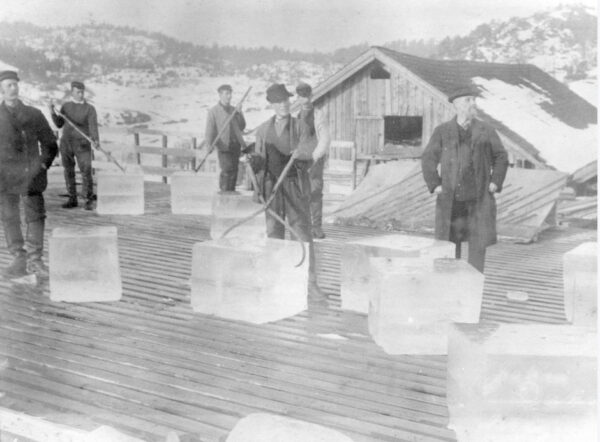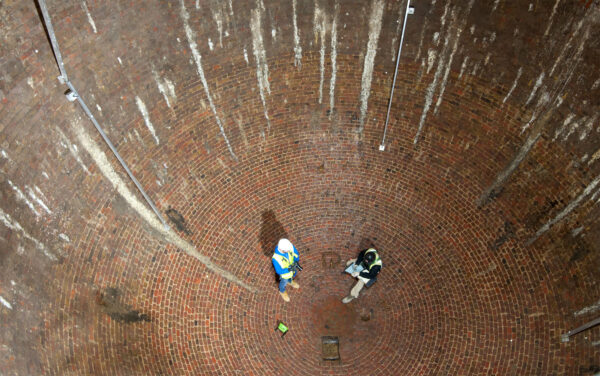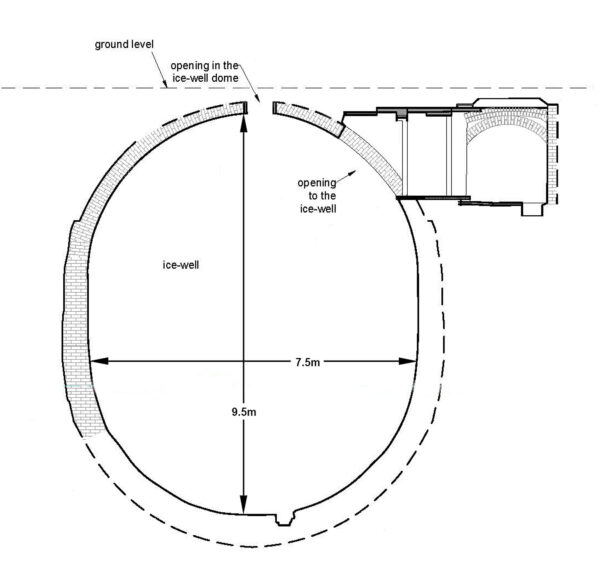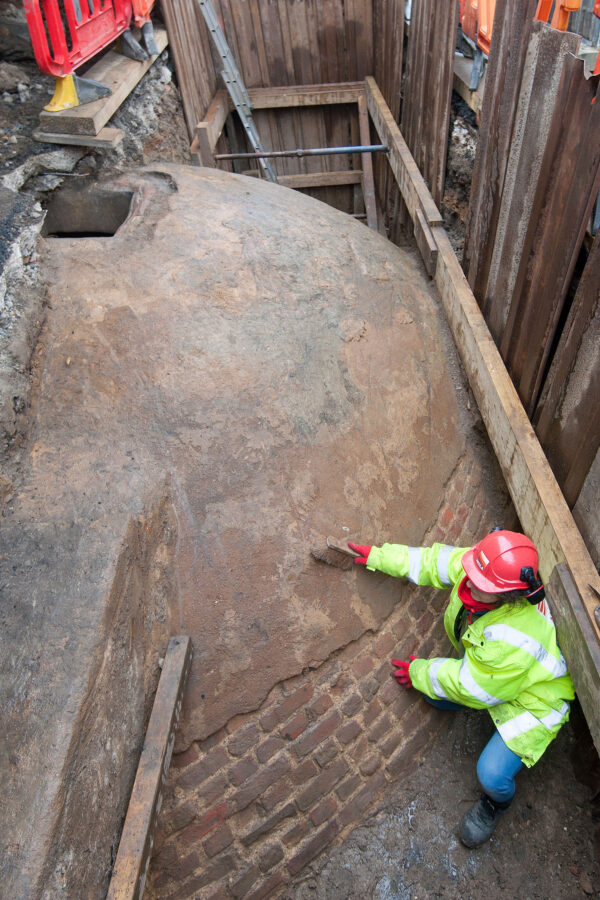A long-lost Ice House has been uncovered during building works under the Regent’s Crescent in Marylebone.
Ice Houses were underground chambers used to store ice and keep it cool in the years before modern refrigeration was invented. Ice was either taken from lakes, or later, imported from Scandinavia by boat, then then sold to be stored in the underground ice house.
Ice House’s vary in size but were usually fairly small in a large garden, but the one found under the streets of Marylebone is one of the largest ever found.
The huge underground Ice House dating from the 1780s has been recorded by buildings archaeologists from MOLA working on behalf of Great Marlborough Estates during the development of Regent’s Crescent.
The Ice House has been designated as a Scheduled Monument by Historic England, and it is hoped that public access, via a new viewing corridor, will be made available at certain times of year during archaeological and architectural festivals.
Located just off Regent’s Park, the subterranean Ice House would have been one of the largest of its kind when first built – measuring an impressive 7.5 metres wide and 9.5m deep. Remarkably, the red brick, egg-shaped chamber survived the Blitz despite the destruction of the mews houses above, and remains in excellent condition, along with its entrance passage, and vaulted ante-chamber.
In the 1820s the Ice House was used by pioneering ice-merchant and confectioner William Leftwich to store and supply high quality ice to London’s Georgian elites, long before it was possible to manufacture ice artificially. It was extremely fashionable to serve all manner of frozen delights at lavish banquets, and demand was high from catering traders, medical institutions and food retailers. Ice was collected from local canals and lakes in winter and stored, but it was often unclean, and supply was inconsistent.
Leftwich was one of first people to recognise the potential for profit in imported ice: in 1822, following a very mild winter, he chartered a vessel to make the 2000km round trip from Great Yarmouth to Norway to collect 300 tonnes of ice harvested from crystal-clear frozen lakes. The venture was not without risk: previous imports had been lost at sea, or melted whilst baffled customs officials dithered over how to tax such novel cargo. Luckily, in Leftwich’s case a decision was made in time for the ice to be transported along the Regent’s Canal, and for Leftwich to turn a handsome profit.
Once restored, the Ice House will be incorporated into the gardens of Regent’s Crescent. Great Marlborough Estates are now in the process of rebuilding the Crescent in conjunction with the restoration of the Ice House.
Built in 1819, the Grade I listed Georgian crescent was originally designed by John Nash, famed architect behind Buckingham Palace. The houses were in fact destroyed by enemy action during the Blitz and subsequently replaced in the 1960s by a replica, and are now being rebuilt once again, in the same style.
David Sorapure, Head of Built Heritage at MOLA, said: “Standing inside the cavernous and beautifully constructed Ice House at Regent’s Crescent, it is fascinating to think that it would once have been filled with tonnes of blocks of ice that had travelled across the North Sea and along the Regent’s Canal to get there. The structure demonstrates the extraordinary the lengths gone to at this time to serve up luxury fashionable frozen treats and furnish food traders and retailers with ice.”











Utterly amazing
The things you find when you do a bit of digging!
What an amazing find, and one well worth preserving.
Wow! That’s some ice house. Fancy living above that and not knowing it was there. 😳
How cool is that?
… but where did they store the gin?
How fantastic ! It’s not clear how they got the blocks in and out.
Great stuff!
Any link to Gunter’s “ices” that often crop up as a reference in Regency novels? The two locations seem to be close enough. (Berkely Square and Regents)
Might encourage some of those readers to visit once open.
Really proud that a Leftwich came up with this idea and made some money. Just tracing my heritage…..
I am related to William Leftwich. How wonderful that this has been found!